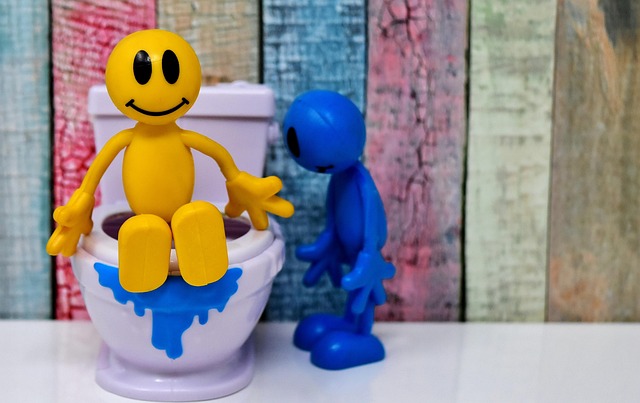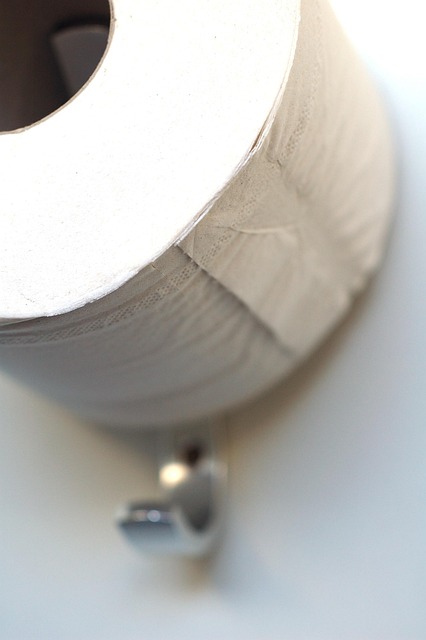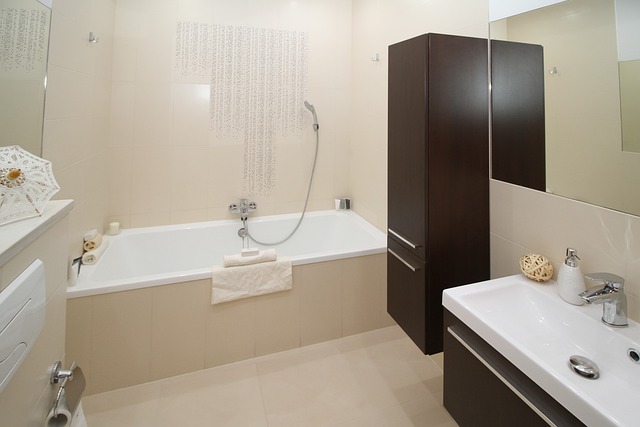A running toilet wastes water and increases utility bills. Before calling a plumber, inspect for common issues like leaky flush valves or faulty float-and-ball assemblies. Gather tools and materials including an adjustable wrench, pliers, new flapper, plumber's putty, bucket, towel, toilet brush, and plunger. Follow a straightforward DIY guide to locate and turn off water supply valves, remove old flappers, replace them with new ones, reattach chains, fill the tank, flush, and test for resolution. Mastering how to stop a running toilet is an essential homeownership skill that saves time, money, and hassle.
Tired of a constantly running toilet? Learn how to fix it yourself without calling a plumber. This step-by-step guide covers everything from identifying the cause – whether it’s a leaky flapper or a faulty float – to gathering the right tools and materials. We’ll walk you through the process, making it easy to stop that relentless runoff and save money on your plumbing bill.
- Identify the Cause of the Running Toilet
- Gather the Necessary Tools and Materials
- Step-by-Step Guide to Fix the Running Toilet
Identify the Cause of the Running Toilet

A running toilet is not only an annoying waste of water but can also significantly increase your utility bills. Before you reach for the phone to call a plumber, try identifying the cause of the problem. The most common culprits are a leaky flush valve or a faulty float-and-ball assembly. If the toilet continues to run after flushing, check if water is leaking from these components. A visual inspection can help pinpoint the exact issue.
For a leaky flush valve, the O-ring or gasket might be worn out or improperly seated. The float-and-ball assembly controls the water level in the tank; if it’s malfunctioned, the toilet will keep filling even after flushing. Understanding these basic mechanics allows you to tackle the problem head-on and learn how to stop a running toilet without professional help.
Gather the Necessary Tools and Materials

Before attempting to fix a running toilet, make sure you have all the necessary tools and materials on hand. You’ll need an adjustable wrench or pliers for loosening fittings, a new flapper (the part that covers the hole in the tank), some plumber’s putty, and a bucket to catch any excess water. A towel can also be helpful to absorb spills. For more complex issues, you might require additional tools like a toilet brush and a plunger.
Gathering these items ahead of time ensures you’re prepared to tackle the problem head-on. With the right tools in hand, you’ll be ready to diagnose and fix the issue causing your toilet to run continuously, ultimately saving you time, money, and the hassle of calling a plumber for a simple repair. Remember, understanding how to stop a running toilet is a valuable skill every homeowner should possess.
Step-by-Step Guide to Fix the Running Toilet

Fixing a running toilet is an easy, DIY task that can save you money and avoid calling a plumber. Here’s a step-by-step guide to help you stop the constant flow. First, locate the toilet’s fill valve, usually behind a panel on the tank’s side or top. Turn off the water supply valves beneath the toilet by twisting them clockwise with a wrench. Next, flush the toilet to empty its bowl and release pressure. Remove the old flapper by pulling it straight up from the valve seat. This is often held in place by a clip or nail; simply remove it to expose the seat.
Get a new flapper that fits your toilet’s make and model, and install it by aligning the holes then pressing it firmly onto the valve stem. Ensure it seals tightly against the seat. Reattach the chain to the lift handle, making sure it connects correctly. Turn on the water supply valves and fill the tank. Once full, flush the toilet to test its fix. If it stops running after each flush, you’ve successfully repaired your running toilet.
Fixing a running toilet is easier than you think. By identifying the cause, gathering the right tools, and following a simple step-by-step guide, you can stop the endless water flow and save money on plumbing bills. Remember, understanding how to address this common issue empowers you to take control of your home’s maintenance, making it a valuable skill for any DIY enthusiast. Now, armed with knowledge, give it a try and watch those savings add up!
